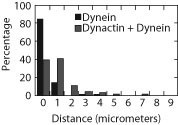Dinoflagellates are important to coral and coral-dwelling animals because they
A) provide energy in the form of organic molecules that is used by coral animals.
B) provide shelter for the fast-growing seaweeds associated with coral.
C) produce carbon dioxide (CO2 ) and nitrogen for coral.
D) are toxic to species that prey on reef-dwelling fish.
Answer: A
You might also like to view...
Since Watson and Crick described DNA in 1953, which of the following might best explain why the function of small RNAs (miRNAs) is still not well understood?
A) As RNAs have evolved since that time, they have taken on new functions. B) Watson and Crick described DNA but did not predict any function for RNA. C) The functions of small RNAs could not be approached until the entire human genome was sequenced. D) Ethical considerations prevented scientists from exploring this material until recently. E) Recent advances in technology and our understanding of how DNA is expressed have made this possible.
In a heterozygote for two linked genes, both dominant alleles are on one chromosome and both recessive alleles are on another chromosome. The genes are said to be in
A) recombination. B) repulsion. C) cis. D) trans.
Chromosomes become visible during prophase of
mitosis as a result of a. uncoiling. b. DNA synthesis. c. condensation. d. chromatid duplication. e. addition of proteins to the DNA
The accompanying figure shows data from an experiment in which researchers measured how far dynein (a motor protein) traveled in the presence and absence of dynactin (another type of protein). The y-axis shows the percent of the time that the researchers
observed either dynein or dynein + dynactin "walking" a certain distance on a microtubule. What can you conclude from these data?
A) The addition of dynactin caused dynein to travel farther along the microtubule.
B) Dynein traveled farther in the absence of dynactin.
C) A higher fraction of the dynein proteins were motile in the absence of dynactin.
D) Dynactin would have the same effects on dynein movement on microfilaments.